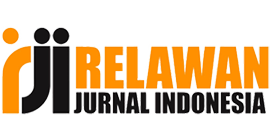DAMPAK PENATAAN BARIS TANAM DAN DEFOLIASI DAUN JAGUNG TERHADAP HASIL JAGUNG (VARIETAS TAMBIN), PERTUMBUHAN DAN HASIL KACANG TANAH (VARIETAS JERAFAH) DALAM SISTEM TUMPANGSARI
Abstract
An experiment to know the effect of plant row and the defoliation of maize leave to the yield of maize, growth and the yield of peanut was conducted in peanut field, socah district, Bangkalan. A 2x4 factorial with three replications was arranged in split plot design. The first factor was plant row of design, i.e. single and double row of plant. The second factor was the defoliation of maize leave, i.e. 0% (the control), 30%, 40% and 50% of the defoliation of maize leave. Result of the experiment indicated that the defoliation of maize leave at 40% and 50% reduced the yield 38,70% and 39,40% of dry weigth of plant, 6,80% and 15,10% of 100 seed weigth. The interaction treatment only gave significant effect in the maize-ear dry weigth; defoliation of maize leave very reduce the maize-ear dry weigth, especially in the double-row of plant. Defoliation of maize leave effect growth, component of yield and yield of peanut. The row plant design effect to the leave area, component of yield and yield except to weigth of 100 seed. The double row of plant compare to single row of plant have dry weigth of pod, sum of pod, sum of seed and dry weigth of seed plant significant. Increment of defoliation of maize leave significant to increase sum of branch, plant dry weigth, sum of leave, pod dry weigth, sum of pod, sum and dry weigth of seed of plant. The defoliation of maize leave until 40% are the best to tolerance to possible to yield optimum, especially in the double row of plant.
Full Text:
PDF (Bahasa Indonesia)References
Donald, C. M. 1963. Competition among crop and pasture plant. Advences in agronomi. 15: 1-118.
Lambers, H., F.S. Chapin dan T. L. Pons. 1990. Plant physiological ecologi. Springer-verlag. New York. p. 25-46.
Moenandir, J. 1993. Persaingan tanaman budidaya dengan gulma. Raja Grafindo. Jakarta.
Nugroho, W. H. 1990. Statistical analysis and interpretation of intercropping research. FP-Unibraw. Malang. p. 3-5.
Rahmianna, A. A., J. Purnomo dan Marwoto. 1989. Produktifitas tanaman kacang tanah dan jagung pada lingkungan tumpangsari di lahan tegal. Journal penelitian palawija. BPTP. Malang. Vol. 4(2): 34-38.
Salisbury, F. B. Dan C. L. Ross. 1995. Fisiologi pertumbuhan. ITB. Bandung
Sitompul, S. M. dan B. Guritno. 1995. Analisis pertumbuhan tanaman. Gajah Mada Univ. Press. p. 160.
Sukoco, Y., C. Reintjes, Haverkort, B. dan J. Woter. Pertanian masa depan (Pengantar untuk pertanian berkelanjutan dengan input luar rendah). Kanisius. Yogyakarta.
Suprapto. 2002. pengeruh naungan jagung terhadap pertumbuhan dan hasil kacang tanah varietas kelinci dan kidang di lahan marginal Gerokgak-Buleleng. BPTP. Bali.
Zuchri, A. 2006. Minimalisasi dampak kompetisi jagung dan kedelai tumpangsari melalui pengaturan penempatan dan dosis pupuk N, P, K. Embrio Jurnal Ilmu-ilmu Pertanian. Vol 3 (2): 71-82
DOI: https://doi.org/10.21107/agrovigor.v3i1.255
Refbacks
- There are currently no refbacks.
Copyright (c) 2015 Amin Zuchri



2.png)









